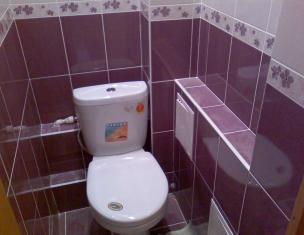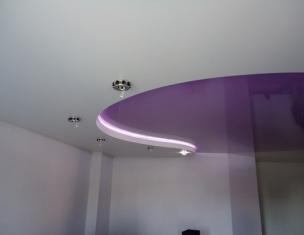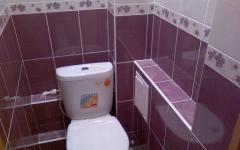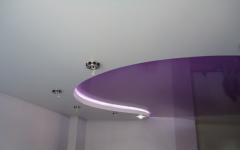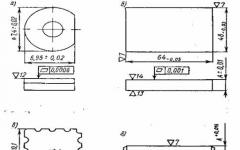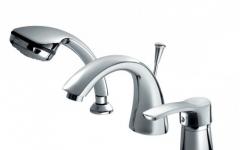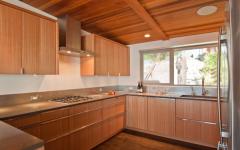Most people prefer a wooden floor, because. it is more environmentally friendly and durable. However, such a floor is not at all ideal, because over time, its floorboards begin to creak unpleasantly.
Why does the floor creak and how to eliminate it? In this article, we will look at how to get rid of a floor creak without opening it or completely replacing it, and explain the reasons for the appearance of a creak in the floor.
Causes of creaking wooden floors
Before we eliminate the creak of a wooden floor, we will determine the cause of this unpleasant sound.
Deformation of obsolete lag
1) The floorboards are poorly fixed to the joists. That is, nails were used to fix them, which after a while became loose.
2) Incorrect laying of the lag. They must be installed freely, i.e. without rigid fixation, but at the same time stable, so as not to stagger.
3) The gaps between the floorboards. They appear due to damp wood, which withered with the change of season, and the boards began to rub against each other.
4) No temperature gap. It should be at least 1 cm, but not rigidly fixed to the walls.
And also there should be no wedging.
5) A large gap between the lags or the use of very thin floorboards.
 Poor fastening of floorboards to the logs
Poor fastening of floorboards to the logs Eliminating the squeak of a wooden floor: screwing the floorboards
To eliminate the floor creak without opening for the first reason: poor attachment to the joists, no special efforts are needed. Just screw the latter with long and large self-tapping screws. At the same time, you can not remove the old nails, but simply make the same holes nearby. However, if their caps are bent or stick out, then they must be removed. Namely:
 Wood floor scroll
Wood floor scroll 1. Determine the thickness of the floorboards and the log in order to purchase suitable self-tapping screws. Important! They should be about 2 or 3 cm less than the entire thickness of the structure.
The distance to the concrete base is determined by drilling a hole or removing one floorboard.
2. Remove the floor plinth. It is necessary to consider the location of the lag in the hole near the wall. Thus, the required number of self-tapping screws is calculated, while multiplying the number of lags by the number of floorboards in width.
3. Drill pre-slits to make it easier to screw in and press the boards tightly.
4. Screw each floorboard at the junction of the log. At the same time, so that the hats do not stick out, they are slightly drowned.
 Floorboard fixing scheme
Floorboard fixing scheme 5. Make a mark with a marker where the removal of the squeak of the wooden floor has not yet been completed. This is necessary to further troubleshoot the problem in a particular location.
How to eliminate floor creaking from chipboard?
Now consider the elimination of floor creaking from chipboard:
1. Determine the place of an unpleasant sound, release it and remove the floor covering.
2. In the discovered place, a square is drawn about 15x15 cm.
3. Cut out the drawn square using a grinder, electric jigsaw or circular saw.
 Cutting a hole in chipboard
Cutting a hole in chipboard 4. Measure the distance from the chipboard to the concrete base of the floor and cut out a small bar.
5. Drive the prepared bar under the floor. This will eliminate any deflections.
 Driving in a block for auxiliary support
Driving in a block for auxiliary support 6. Fix the cut out square back with self-tapping screws.
7. The cracks are puttied and the floor covering is put in place.
 Closing the hole and puttying the gap
Closing the hole and puttying the gap Important! All materials for leveling a wooden floor (chipboard, plywood or OSB) are installed with a temperature gap between the sheets - from about 3 to 5 mm. And then, if necessary, these cracks are sealed with putty on wood.
How to remove the floor creak due to the deflection of the boards?
If the floorboards began to creak due to the fact that the floorboards are very thin, they sagged. Either the installation step of the lag was chosen incorrectly, then this can be eliminated without opening them.
Before removing the creak of the wooden floor in this case, get long self-tapping screws with large threads that can hold the floorboards.
The length of these self-tapping screws should be equal to the length from the top edge of the finished floor covering to the concrete base or slightly more.
1. Pre-drill a small hole right through. Important! It should not fall into the lags, but be between them.
2. Screw in the screws, which are needed as additional legs, until they stop, and get rid of the deflection. Important! Pre-cut the sharp edges of the screws. If this is not done, then sooner or later they will wipe the concrete base.
 Screw driving
Screw driving In addition to the above, floorboards can also bend due to the use of incorrect boards. So, for example, if planed floorboards without a groove and a thorn are laid on the floor, then they will not adjoin each other. For the floor, only tongue-and-groove boards should be used.
 Connecting floorboards with dowels
Connecting floorboards with dowels 1. Drill a hole at an angle using a long wood drill. That is, so that it passes through two adjacent boards.
2. PVA is applied to the fastener - dowel, which is then driven inward. Important! The dowel must go halfway into each of the floorboards in order to connect them.
3. Drill holes separately and in the opposite direction.
4. When the glue dries, cut off the excess flush.
We eliminate the floor creak in the apartment: gaps between the floorboards
How to eliminate floor creaking due to friction between the floorboards? Solving the problem is easy. It is necessary to wedge the damaged floorboards and repair the gap between them. Namely:
 Floor squeak elimination sequence
Floor squeak elimination sequence 1. Thin wedges made of wood are pulled out. Or a braided cord is used instead.
2. Apply PVA or wood glue to these wedges and drive them into the slot.
3. When the glue dries, cut off the excess wedges flush with the surface.
4. The remaining small gaps are eliminated with homemade putty, i.e. from wood dust from sanding with glue.
Thus, most of the problems with the creak of a wooden floor are associated with a violation of the laying technology.



